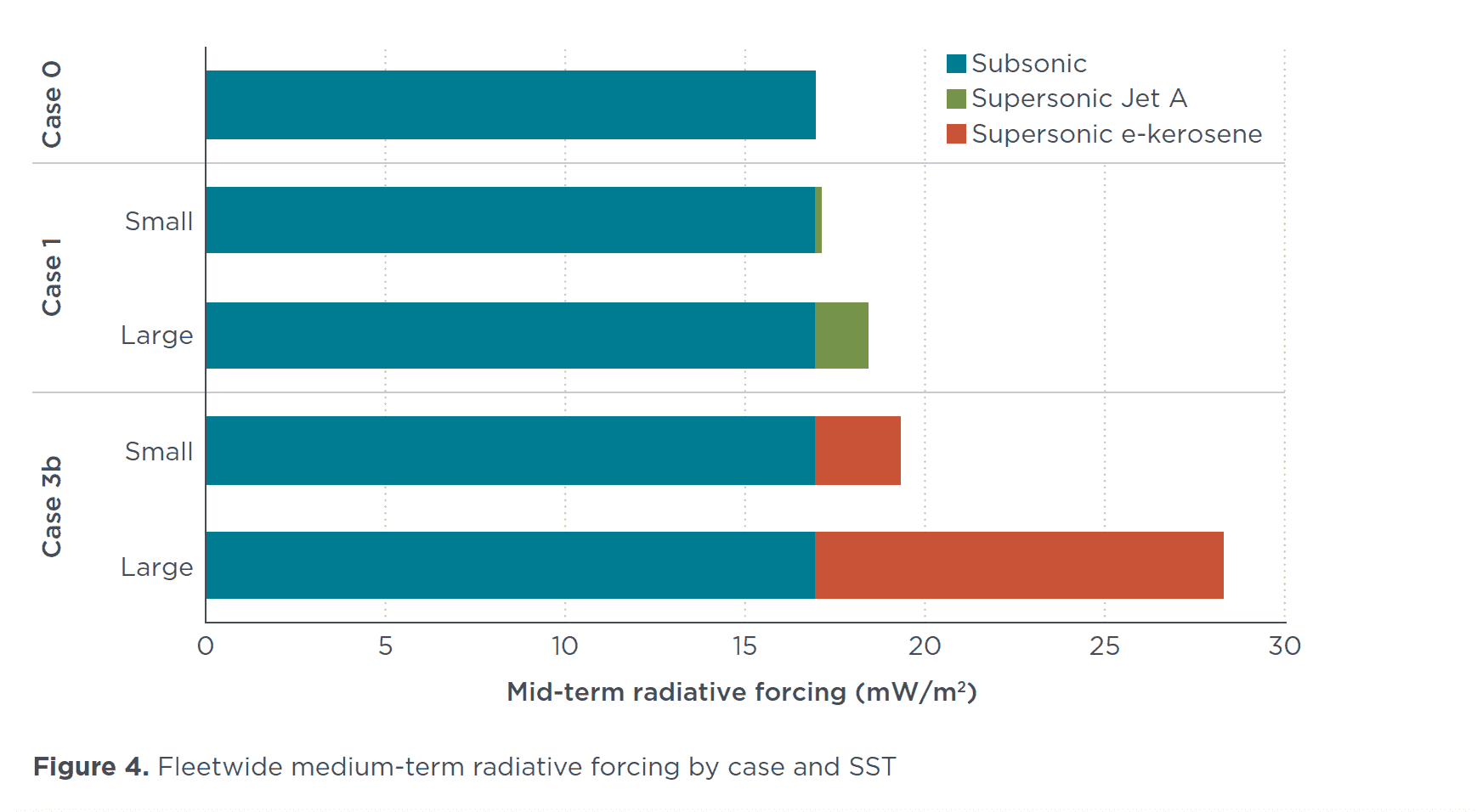Environmental performance of emerging supersonic transport aircraft
Working Paper
Environmental limits on supersonic aircraft in 2035
This study investigates the market potential and atmospheric impacts of two potential supersonic transport (SST) aircraft: a small jet (“Small SST”) seating 15 passengers and designed for 140% the speed of sound (MN 1.4), and a larger airliner (“Large SST”) seating 75 and operating at MN 1.7. We model the potential market and climate impacts of both aircraft without environmental constraints, and then under noise and climate constraints. The number of supersonic aircraft, potential operations, and overall fuel burn under four scenarios in 2035 are projected using a modeling suite from the MIT Laboratory for Aviation and the Environment; the GEOS-Chem global chemistry transport model is used to derive the radiative forcing (RF) impact of ozone, water vapor, methane, and black carbon and sulfate aerosols from those operations.
We find that environmental limits will sharply constrain the potential supersonic market. For the unconstrained case, we find a potential market for 130 (small) to 240 (large) supersonic aircraft under the base economic case in 2035, providing up to 0.6% of available seat kilometers that year. But for all but the most optimistic economic case, we project no supersonic market because airlines will be unable to operate SSTs profitably with overland flight restrictions or using synthetic “e-kerosene” produced from renewable electricity.
The SSTs investigated are expected to burn 7 to 9 times more fuel per seat-km flown than the subsonic baseline, creating substantial environmental impacts and poor economics. In the hypothetical case where supersonics have access to e-kerosene at cost parity with fossil jet fuel (Jet A), e-fuels could reduce lifecycle CO2 emissions by about 90% compared to Jet A, but only modestly reduce (6 to 24%) CO2 per seat kilometer compared to more fuel-efficient subsonic designs operating on Jet A. We find significant tradeoffs, however, in the use of e-fuels in supersonic aircraft owing to the high altitudes at which they fly. Operating the Large SST on e-kerosene could increase the medium-term RF of commercial aviation by two-thirds despite covering less than 1% of all traffic in ASKs.
Overall, we conclude that environmental considerations are likely to tightly constrain supersonic markets for the foreseeable future. Both low-boom designs and ultralow cost sustainable aviation fuel (SAF) will be needed for a sizeable supersonic market to develop. In the near-term, any supersonic aircraft developed are likely to be operated on fossil fuels, not e-kerosene, after being delivered.

